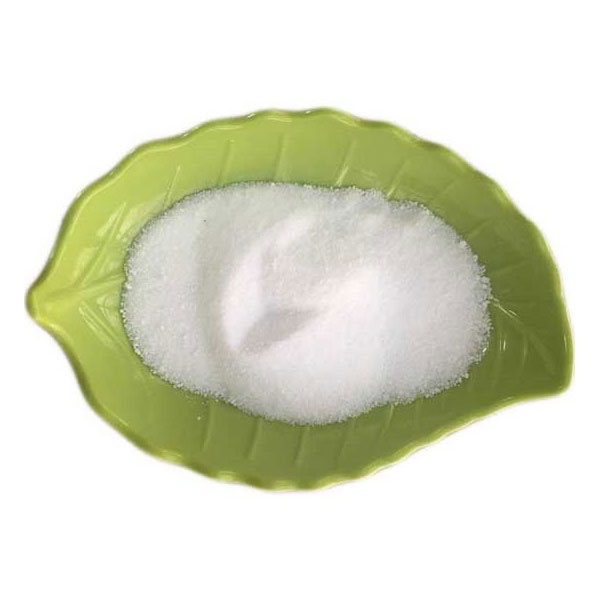What Makes Sodium Gluconate a Versatile Industrial Additive?
2025-08-06
In the realm of industrial chemicals, few compounds have earned the reputation for versatility that sodium gluconate enjoys. A sodium salt of gluconic acid, this white, water-soluble powder has found its way into a diverse range of applications, from construction and food processing to pharmaceuticals and cleaning products. Its unique chemical properties—including chelating abilities, low toxicity, and stability—make it an indispensable ingredient in countless manufacturing processes. As industries increasingly seek efficient, safe, and sustainable additives, understanding what sets sodium gluconate apart and why it has become a staple in so many sectors is key. This guide delves into the multifaceted role of sodium gluconate, its production process, detailed specifications of our high-quality product, and answers to common questions, highlighting its value as a versatile industrial solution.
Trending News Headlines: Top Searches on Sodium Gluconate
- "Sodium Gluconate in Concrete: Boosting Strength and Workability"
- "2024’s Demand Surge for Sodium Gluconate in Food Preservation"
- "Eco-Friendly Cleaning: Sodium Gluconate as a Green Chelating Agent"
Why Sodium Gluconate Is a Preferred Industrial Additive
Powerful Chelating Properties
One of sodium gluconate’s most valuable traits is its ability to act as a chelating agent—meaning it binds to metal ions (such as calcium, magnesium, and iron) and forms stable, water-soluble complexes. This prevents the metal ions from interfering with chemical reactions or causing unwanted effects in formulations. In cleaning products, for example, it sequesters hard water minerals, allowing surfactants to work more effectively and preventing the formation of soap scum. In industrial processes like textile dyeing, it binds to metal ions that could otherwise alter the color or quality of dyes, ensuring consistent results. In construction, it chelates calcium ions in concrete, delaying setting time and improving workability without compromising strength— a crucial benefit for large-scale projects where extended processing time is needed.
Low Toxicity and Safety
Unlike many industrial chemicals that pose health or environmental risks, sodium gluconate is relatively non-toxic, making it suitable for applications where safety is paramount. It is approved for use in food processing by regulatory bodies such as the FDA and EFSA, where it functions as a sequestrant, stabilizer, or pH adjuster. In pharmaceuticals, its low toxicity allows it to be used as an excipient—a substance that helps stabilize active ingredients in medications. This safety profile also makes it ideal for household cleaning products, reducing the risk of harm to users or the environment. For industries under increasing pressure to adopt safer chemicals, sodium gluconate offers a viable alternative to more hazardous chelating agents like EDTA in some applications.
Stability and Compatibility
Sodium gluconate exhibits excellent stability across a wide range of temperatures and pH levels, making it compatible with various formulations and processing conditions. It remains effective in both acidic and alkaline environments, which is critical in industries like metal processing, where solutions often have extreme pH values. In high-temperature applications—such as concrete curing or industrial cleaning— it retains its chelating properties, ensuring consistent performance even under harsh conditions. This stability also extends to storage, as sodium gluconate has a long shelf life when kept in dry, cool conditions, reducing waste and ensuring reliability for manufacturers.
Sustainability and Biodegradability
As sustainability becomes a central focus for industries worldwide, sodium gluconate’s biodegradable nature has become a key advantage. Unlike synthetic chelating agents that persist in the environment, sodium gluconate breaks down into harmless byproducts, reducing its ecological footprint. It is often derived from renewable resources—gluconic acid, its parent compound, is typically produced via the fermentation of glucose from corn or other plant-based sources—further enhancing its green credentials. This makes it a preferred choice for eco-friendly products, from biodegradable detergents to sustainable construction materials, aligning with corporate sustainability goals and consumer demand for environmentally responsible goods.
Cost-Effectiveness
How Is Sodium Gluconate Produced?
Raw Material Preparation
The primary raw material for sodium gluconate is glucose, typically derived from corn starch, which is hydrolyzed to produce high-purity glucose syrup. This glucose serves as the substrate for fermentation. Other key materials include sodium hydroxide (used to neutralize gluconic acid) and water, which must meet strict purity standards to avoid contamination. Before production begins, the glucose syrup is tested for impurities, such as heavy metals or residual sugars, to ensure it meets quality specifications. This step is critical, as impurities can affect the fermentation process and the final product’s performance.
Fermentation
Fermentation is the core step in converting glucose to gluconic acid, which is then converted to sodium gluconate. The process uses a strain of bacteria—most commonly Aspergillus niger or Gluconobacter oxydans—which oxidizes glucose under aerobic conditions (in the presence of oxygen). The glucose solution is mixed with nutrients (such as nitrogen sources and minerals) to support bacterial growth and fed into a fermentation tank. The tank is maintained at a controlled temperature (typically 30-35°C) and pH level (around 6.0-6.5) to optimize bacterial activity. Oxygen is continuously supplied through aeration, and the mixture is agitated to ensure uniform conditions. Over the course of 24-48 hours, the bacteria convert glucose to gluconic acid, with the reaction monitored closely to ensure complete conversion.
Neutralization
Once fermentation is complete, the resulting gluconic acid solution is neutralized with sodium hydroxide (NaOH) to form sodium gluconate. This step involves slowly adding sodium hydroxide to the acid solution while stirring, which raises the pH to around 7.0-8.0. The reaction is exothermic (releases heat), so the mixture is cooled to maintain a temperature of 40-50°C, preventing degradation of the product. The neutralization process converts gluconic acid (C₆H₁₂O₇) to sodium gluconate (C₆H₁₁NaO₇) and water, with the reaction carefully controlled to ensure full conversion and avoid excess sodium hydroxide, which could introduce impurities.
Purification
After neutralization, the sodium gluconate solution undergoes purification to remove residual impurities, such as unreacted glucose, bacterial cells, and mineral salts. The solution is first filtered to remove solid particles, using techniques like microfiltration or centrifugation to separate the liquid from solids. Next, it may undergo ion exchange chromatography, where ions like calcium, magnesium, or heavy metals are adsorbed onto a resin, leaving a purified sodium gluconate solution. For applications requiring ultra-high purity (such as pharmaceuticals or food processing), additional steps like activated carbon treatment may be used to remove organic impurities and improve color clarity.
Concentration and Crystallization
The purified sodium gluconate solution is concentrated to increase its solids content, typically through evaporation. The solution is heated under reduced pressure to remove water, which lowers the boiling point and prevents thermal degradation. This process continues until the solution reaches a concentration of 60-70% solids. The concentrated solution is then transferred to a crystallizer, where it is cooled gradually to induce the formation of sodium gluconate crystals. Seed crystals may be added to promote uniform crystal growth. The crystals are allowed to settle, and the mother liquor (remaining liquid) is removed and recycled to maximize yield.
Drying and Milling
The sodium gluconate crystals are separated from any remaining liquid using centrifugation and then dried to remove residual moisture. Drying is typically done in a vacuum dryer or fluidized bed dryer at temperatures below 60°C to preserve the product’s stability. The dried crystals are then milled to achieve a uniform particle size, which is important for consistent dissolution and handling in industrial applications. The final product is sifted to remove any oversized particles, ensuring it meets the desired particle size distribution.
Quality Control
Our Sodium Gluconate Specifications
|
Parameter
|
Industrial-Grade Sodium Gluconate
|
|
Chemical Formula
|
C₆H₁₁NaO₇
|
|
Appearance
|
White crystalline powder, odorless
|
|
Purity
|
≥99.0% (by dry weight)
|
|
Moisture Content
|
≤0.5%
|
|
pH Value (10% aqueous solution)
|
6.5-8.5
|
|
Ash Content
|
≤0.1%
|
|
Heavy Metals (as Pb)
|
≤10 ppm
|
|
Iron (Fe)
|
≤5 ppm
|
|
Chloride (Cl⁻)
|
≤0.02%
|
|
Sulfate (SO₄²⁻)
|
≤0.02%
|
|
Reducing Substances (as glucose)
|
≤0.5%
|
|
Particle Size
|
80-120 mesh (standard); customizable upon request
|
|
Solubility
|
≥100g/L in water at 20°C
|
|
Melting Point
|
Decomposes at ~215°C
|
|
Bulk Density
|
0.6-0.8 g/cm³
|
|
Shelf Life
|
24 months when stored in original, sealed packaging in a cool, dry place
|
|
Packaging
|
25kg woven bags with polyethylene liners; 1000kg jumbo bags available
|
FAQ: Common Questions About Sodium Gluconate
A: Sodium gluconate acts as a retarder in concrete, slowing down the hydration of cement to extend setting time, which improves workability and allows for easier placement, especially in hot weather or large-scale projects. It works by chelating calcium ions released during cement hydration, delaying the formation of calcium silicate hydrate (C-S-H) gel, which is responsible for setting. The effect depends on the dosage: typically, adding 0.1-0.3% sodium gluconate by weight of cement can extend the initial setting time by 2-6 hours, while higher dosages (0.5-1.0%) may extend it by 12 hours or more. However, excessive dosage (over 1.0%) can lead to reduced strength development, so it’s important to test dosages based on specific cement compositions and project requirements. For most applications, a dosage of 0.2-0.3% is optimal, balancing workability and strength. It’s also compatible with other admixtures like plasticizers, allowing for customized concrete formulations.





